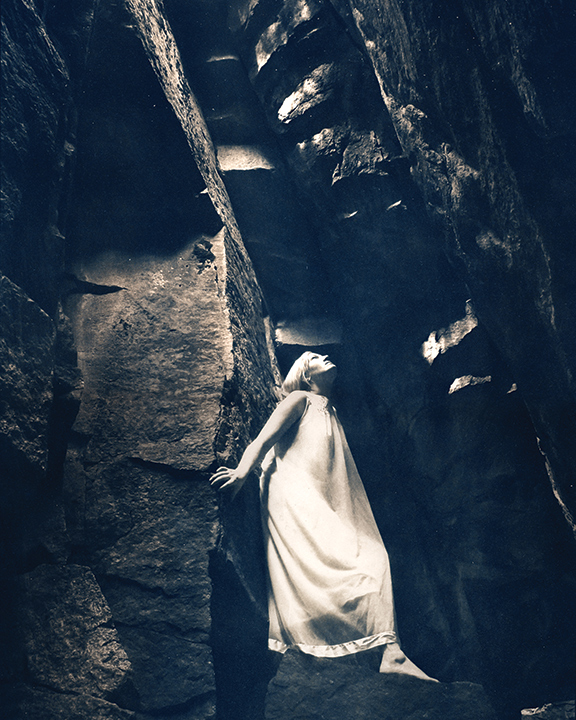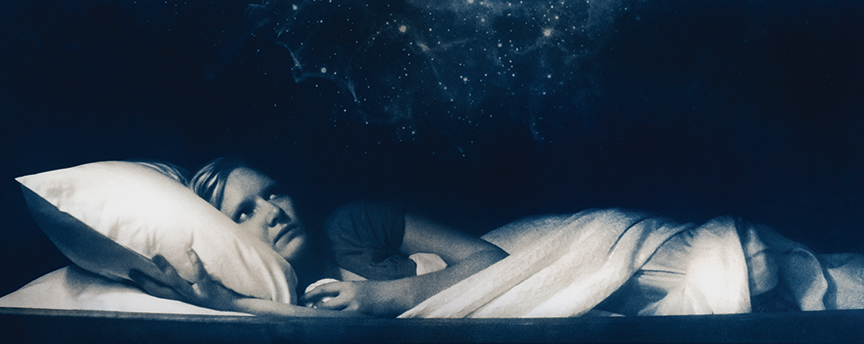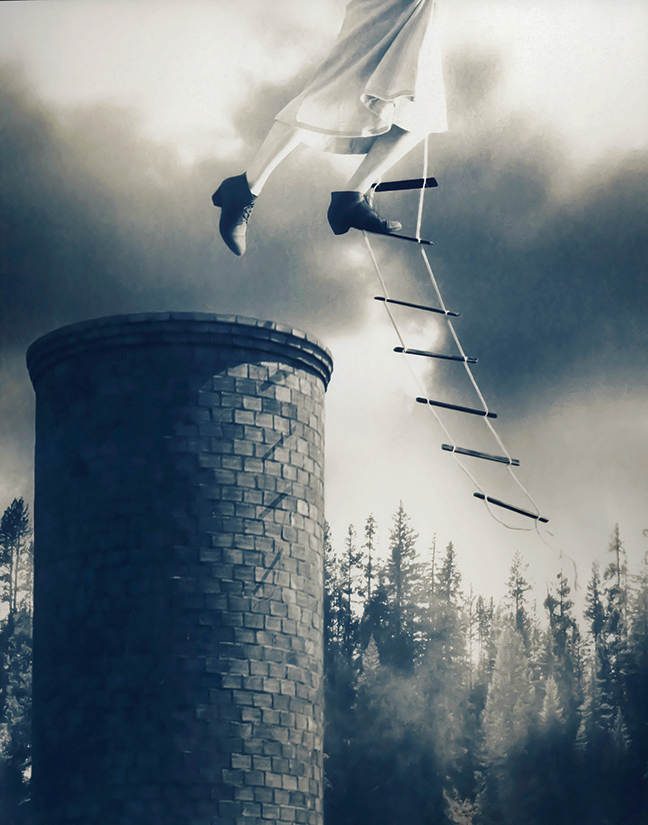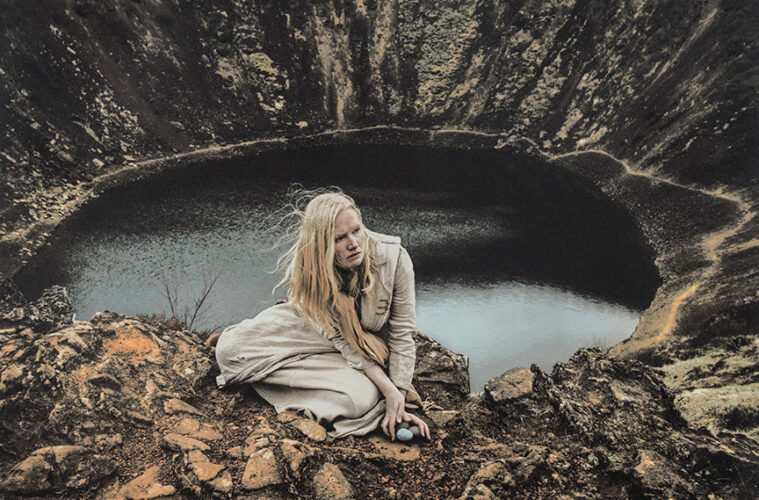BY SHALEEN DESTEFANO
For the Month of Photography, we explore the beautifully complex images of Emma Powell. She was kind enough to let us in on her process as well as what inspires her dream-like photos.
When did you first pick up a camera and make the realization that this would be your passion?
Photography was a part of my life from an early age. As an undergraduate student, I was introduced to alternative processes and I began to develop my voice. Making photographs from scratch fascinated me and allowed for unexpected results. Historic techniques also interested me because of their connection to the past and the evolution of the photographic medium.
 Can you tell us a bit about your artistic process without giving away any of the mystery? Your photos are surreal and leave your audience with the task of interpreting your approach and intention.
Can you tell us a bit about your artistic process without giving away any of the mystery? Your photos are surreal and leave your audience with the task of interpreting your approach and intention.
My artwork investigates how photographs can go beyond factual rendering to create a vision associated with memory or dreams. I often utilize digital collages to build my photographic illustrations. This manipulation allows me to construct scenes and enhance the peculiar aspects that would be impossible to capture in reality. My images border on the cinematic and come about through combining semi-staged location shoots and digital editing.
You have a large catalog, but we would like to begin by diving into Svala’s Saga. Can you tell us about the location and inspiration behind this project?
Svala’s Saga is the result of a combined effort with my mother, Kirsten Hoving. The images were taken primarily in Iceland. Svala’s Saga is a photographic fairy tale about the journey of a single character and the world she inhabits. We were inspired by the dramatic and harsh Icelandic landscape, which plays an active role in the series. The photographs tell the story of our female heroine, Svala, who is confronted with the sudden loss of the world’s birds. She embarks on a mythic quest searching for the last remaining eggs. We wanted to create a fantasy narrative that evoked real-world topics like species extinction. Our goal was to create positive and visually intriguing images that would engage the viewer in these conversations. Throughout the series, I played the character while Kirsten was behind the camera on location for the initial digital capture. We worked closely on the concept and layout of each shot. For many of the images, I created the final composition using a digital collage.
 We chose to print Svala’s Saga using the historic palladium process coated over a digital/pigment under-print. This hybrid technique lacks the immediate historical references of other vintage processes. Instead, it evokes hand-colored photographs or painted illustrations, reinforcing the combination of fantasy and photography. To produce these photographs, I digitally print a layer of color on uncoated print-making paper and then brush palladium photo-sensitive chemicals on top of that. I line up a large digital negative (similar to overhead projector transparencies) in registration with the color layer and expose that to UV light. Finally, I process the print through a series of chemicals to develop and fix the palladium image.
We chose to print Svala’s Saga using the historic palladium process coated over a digital/pigment under-print. This hybrid technique lacks the immediate historical references of other vintage processes. Instead, it evokes hand-colored photographs or painted illustrations, reinforcing the combination of fantasy and photography. To produce these photographs, I digitally print a layer of color on uncoated print-making paper and then brush palladium photo-sensitive chemicals on top of that. I line up a large digital negative (similar to overhead projector transparencies) in registration with the color layer and expose that to UV light. Finally, I process the print through a series of chemicals to develop and fix the palladium image.
You’ve said you specialize in alternative and historic photographic processes, including the 170-year-old photographic printing process of Cyanotype. Is this method isolated to the medium of film, or has it too evolved in the digital age?
Since my first introduction to historic photographic processes in 2005, I have employed a range of techniques through many different projects. I consider the physical crafting of the prints to be an integral part of my artistic practice. I have found creative inspiration in developing hybrid approaches that merge current digital technologies with early methods.
The cyanotype photographic process combines the chemicals potassium ferricyanide and ferric ammonium citrate used as a liquid painted onto paper or other similar materials. Cyanotype is sensitive to UV light and is significantly less sensitive than traditional black and white (silver gelatin) paper. It is exposed to light as a contact print rather than under an enlarger. A negative transparency that is the size of the final image is pressed directly on top of the coated paper during the exposure. I digitally print my images as negatives onto a plastic material coated for inkjet printing. Once exposed to UV light, anywhere that the light touches will turn blue after it is washed in water. If other objects are also blocking the light their silhouette will wash away to reveal the white or color of the paper.
 Your work is moody and rich, evoking a feeling of a dream with a heavy fictional undertone. What inspires your narratives?
Your work is moody and rich, evoking a feeling of a dream with a heavy fictional undertone. What inspires your narratives?
I do not have one single approach to image-making. I incorporate inspiration in many ways. Each image comes together differently. Sometimes I have an idea in my head and sketch it or set up a scene to photograph. Other times they evolve by combining images I have previously taken. I work to fit the pieces together to create a scene that conveys something new or unexpected. I often draw on my own experiences while trying to create universal metaphors.
A few of your pieces will be on display during Month of Photography in Denver. What can you tell us about this project and where can we see your work?
Work from several projects will be on display across Denver for Month of Photography. I am excited to include many new pieces that I have not shown before.
Rain or Shine, Photographs by Emma Powell, Bell Projects, through May 5th, reception on March 18th. Ten new works, including cyanotype and kallitype photographs.
Some Assembly Required, Art Gallery at RRCC, through March 30th. Four new cyanotype photograph/photogram pieces.
Conceptual Photography Exhibition, juried by Mark Sink at D’art Gallery.
March 16 – April 11, 2023. Haircut a cyanotype photograph/photogram on linen.
LOOKING BACK, MOVING FORWARD: Permanent Collection Highlights, Colorado Photographic Arts Center, through APRIL 15, 2023, Opening Reception: a palladium and pigment photograph from my Svala’s Saga series.
 You teach photography. Is it fair to assume that this is strictly a digital photography class? Or do darkrooms still exist in a classroom setting?
You teach photography. Is it fair to assume that this is strictly a digital photography class? Or do darkrooms still exist in a classroom setting?
I have taught all levels of photography, including digital, darkroom, and alternative processes. I believe there is still a place for chemical photography, particularly in the fine art context. There is a level of experimentation and an understanding of the fundamental nature of photographic materials that are harder to develop using only digital techniques. Traditional processes are also hands-on and fun.
In our deep dive into your work, it is clear that your photography has evolved over the years. We’d love to know where your journey as a photographer will take you next. What is on the horizon for you and your art?
In my most recent cyanotype work, I am combining photographs with photograms. While exposing a full-size digital negative onto a cyanotype, I place objects onto the light-sensitive material. I use recognizable things including; scissors, keys, bones, and even my hair. These objects block the light and leave a white silhouette. The photograms create bold compositional elements, that are both in the scene, and suggest states of mind or metaphors.
Thank you for offering a peek into your masterful technique, Emma. To see more of Emma’s work, visit www.emmapowell.photo.

